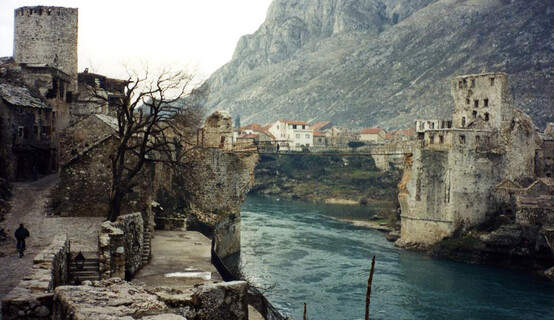The old bridge in Mostar was demolished on November 9, 1993. Zilha Košuta writes about this in her doctoral dissertation, and we only reproduce part of it here, with the note that we have omitted the footnotes.
"The claims and attempts to deny responsibility that the HVO units did not demolish the bridge are unfounded. It has already been said before that the Old Bridge was shelled "by order of the highest authorities of the HVO, as evidenced by the report of the "mixed rocket-artillery regiment" from Široki Brije dated September 19, 1993, which states that on the Old Bridge by order of the Main Staff of the HVO. Also, shelling was established according to the orders of November 8 and 9, 1993. From the position of the HVO, the Stari Most was exposed to shelling and shots from June 1993 to November 9, 1993. Miljenko Lasić's report was a reflection of the will of the HVO to minimize or cover up the responsibility of the armed forces of the HVO for the demolition of the Old Bridge, and we have evidence of this in the conversation of five participants in the Presidential Palace on November 10, 1993. The bridge was demolished also because it was located in a strategically important place, under the control of the ARBiH and represented an important facility for both the ARBiH and the civilian population. The old bridge connected the eastern and western banks of the Neretva, it was a link with the army and civilians in the western part. In a military sense, its demolition would have the effect of cutting the main remaining supply line for members of the ARBiH. HVO knew that ARBIH was using the bridge for those purposes as well. It was also used to transport the wounded to the hospital on the eastern side, it was used to supply food and water. The old bridge was a symbol of Mostar, with the symbolism of the presence of Ottoman civilization in those areas, in whose time it was built. For all the above reasons, the demolition of the Old Bridge was in the interest of the HVO. The goal of the HVO was to lead to the isolation of the part of the city on the right bank that was under the control of the ARBiH. After the destruction of the Old Bridge, HVO forces also demolished the Kamenica bridge, which shows that the goal was to completely cut off the two banks. After the demolition, deep psychological consequences were caused to the population. It greatly affected the morale of the inhabitants of Mostar, which the HVO was fully aware of."
The entire paper can be read here.
